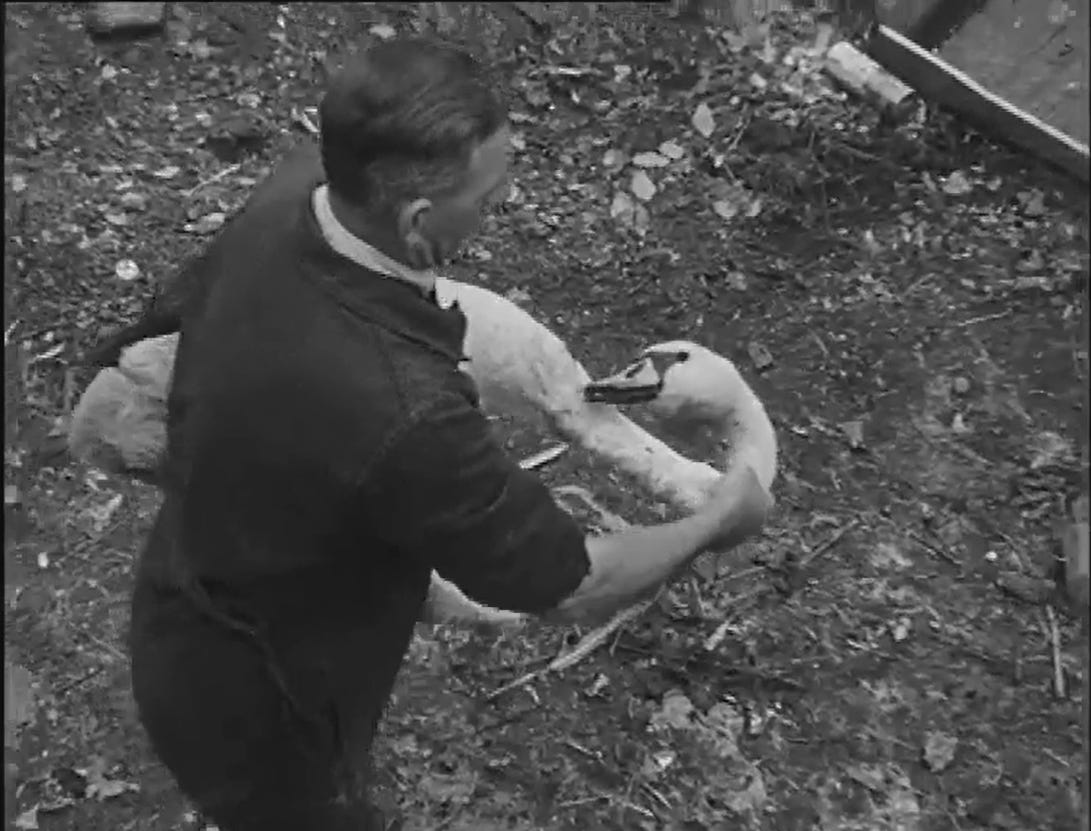First Glance
As I go about my PhD research into postwar Irish agricultural pollution, one of my favorite resources to explore is the archives of Ireland’s national broadcaster RTÉ. I love the grainy feel of 1980s television reporting, the starched collars of reporters and the fuzziness of analog microphones. I strongly believe that history is an essential tool in uncovering a just and survivable future, but the warm fuzziness of archives can easily distract us from the crimes of the present, especially when it comes to environmental disaster.
Rearview
When you search for videos pertaining to pollution in the RTÉ archives you’re confronted with a very specific historical crisis: a series of reports ranging from 1985 to 1990 concerning a series of fish kills on Ireland’s lakes and rivers caused largely by agricultural pollution – effluent from fermenting grass feed and manure slurry as well as some industrial pollution from milk creameries. There are some other assorted reports, like this 1965 footage I love of workers wrangling swans from being poisoned in the River Dodder, but the large majority of the archive focuses on those five years.

It’s easy to see why this was such a big story. Images of salmon lying belly-up in prime former fishing spots, footage of fish hauling themselves out of the water to try to breathe, and endless shots of grimy effluent; trailing down fields, being pumped into tanks, and gushing out of sewage pipes. The signs of environmental degradation are there and they are visually striking. It’s tempting to scroll through these videos and see the issue of Irish water pollution as a thing of the past, something that happened between ‘85 and ‘90 and has since been resolved. My initial reaction to the warm fuzziness with which the past is depicted is to be thankful that major fish kills like this aren’t happening now.
But unfortunately that isn’t the way industry and its environmental issues work. Yes, agricultural pollution is less visible today than in 1987, but it is happening nonetheless. Some folks living near the River Feale in County Kerry still can’t drink water from their taps, just like RTÉ reported in 1987. A primary reason there haven’t been as many fish kills as 35 years ago is that the rivers and lakes just haven’t been able to recover enough to support fish populations. But if it isn’t as visible as in the past, it must not be there—at least that’s the way polluters would hope we think about things.
The goal of industrial innovation and regulation up until this point has never been to decrease pollution, but rather to decrease the visibility of and their direct connection with pollution. Even the focus on silage effluent and creamery pollution in RTÉ’s reporting masks the underlying trends at the root of the issue: intensification of agriculture spurred on by economic pressures for overproduction and an abundance of fertilizer. If the pollution is perceived as a result of effluent, then pollution becomes the fault of the inept farmer, not the fertilizer manufacturers for upsetting the nitrogen cycle, or European Economic Community pressure to increase production. Today, agricultural pollution is even less visible: excess fertilizer is a “non-point source” pollutant, a simple molecule that can’t be tracked to any one farm and only makes itself known when it concentrates in estuaries and watercourses, far from where it was introduced.
Side-by-side
The same is true of all polluting industries. Electric cars are only “green” if the electricity is manufactured with renewables, but it isn’t easy to see the source of the charging station you may have pulled up to. The same is even more true of the hydrogen fuels that have gotten so much press as of late. An energy company can easily promise “green” hydrogen infrastructure only to turn around and switch to fossil-fueled methane production once the investment has been settled, with most consumers being none the wiser. History is an important tool, but we can’t allow ourselves to be fooled into thinking the Cuyahoga River fire and the ozone hole are behind us. As evidenced by the glyphosate and PFAS crises, these same companies haven’t stopped polluting, they just found a sneakier way to do it. It is important that we learn from history to find a better future, but we must recognize that history is only a tool—one that industry also knows to use.